Table of Contents (click to expand)
- 1. From Nothing To Everything!
- 2. It Was All About H And He Back Then…
- 3. We’re All Moving Perpetually!
- 4. Venus The Weirdo!
- 5. Jupiter The Gas Giant
- 6. Sun, The Boss Of Our Solar System
- 7. Innumerable Stars
- 8. Corpses In Space
- 9. Prolonged Space Travel Can Alter Your DNA
- 10. Great Attractor: A Cute Name For An Impending Apocalypse
Many experts refer to space as our final frontier. It is more vast than the human mind can comprehend, inundated with incredible phenomena and events that we barely understand. Although we have been watching the sky since time immemorial—and feeling surreal about existence as a result—crucial space exploration and discoveries that we’ve studied in science textbooks have only begun in the past couple centuries. The more we discover about the universe, the more bewildering it appears!
Let’s take a closer look at some of the amazing facts of our mysterious universe that might change your perspective towards space, time, and your very existence!
1. From Nothing To Everything!
The universe encompasses everything. From tiny atoms and colossal planets to overwhelming galaxies and star-birthing nebulae. But how did it all began? Despite multiple theories and myths surrounding how everything came to existence, the Big Bang theory is the most widely accepted one. The Big Bang Theory states that the universe we know today was conceived from an incredibly hot and infinitely dense point. It was only a few millimeters wide, similar to a supercharged black hole. 13.7 billion years ago, this miniature singularity point exploded. It was from this explosion that all matter, energy and time were created. The unfathomably vast universe we know today was created from a supercharged black hole smaller than a pencil tip!
Also Read: What Caused The Big Bang?
2. It Was All About H And He Back Then…
At the time of inception, the Universe was only composed of hydrogen (H) and helium (He). Every other element you see in the periodic table was subsequently formed after supernovae, i.e., the explosion of stars. When stars explode in a supernova, enormous amounts of energy and neutrons are emitted, which then take the form of various heavier chemical elements that we find in the periodic table. Organic chemical compounds that make life or the metallic gold in the jewelry that we wear are actually made from an exploding star. Thus, hydrogen and helium are the only original elements that directly emanated from the Big Bang, while the rest are simply derivatives of subsequent star explosions.
The next time you suck down helium from a balloon at a friend’s party, you’re probably sucking down gas that formed just a few minutes after the fateful Big Bang!

Also Read: Where Do Stars Get Their Hydrogen From?
3. We’re All Moving Perpetually!
You might be reading this article while lounging near a window watching chaotic traffic shuffle by outside. You might erroneously assume that you are rather at rest or stationary. Well, the human body—or any object on our planet, for that matter—is never truly at rest. Right now, you’re rotating with the Earth at a speed of 1,070 MPH. That Earth you are on is further revolving around the Sun at 66,600 MPH. Further out, the gigantic solar system we’re residing in with other planets is revolving through the center of our galaxy at around 559,235 MPH. Our galaxy, the Milky Way, is also racing at 671,080 MPH across the Universe. When we consider that, you cross several thousand miles of space with every blink of your eye! Remember that if your friends start nagging that you don’t “travel” enough!
Also Read: Why Don’t We Feel The Earth Spin On Its Axis?
4. Venus The Weirdo!
What if I asked you to name the hottest planet in our solar system? You would probably reply “Mercury”, but that’s wrong! Granted, by applying crude logic, Mercury is in the closest proximity to the Sun, and should therefore be the hottest, but that isn’t really the case. The hottest planet in our solar system is Venus, boasting a surface temperature of roughly 462oC.
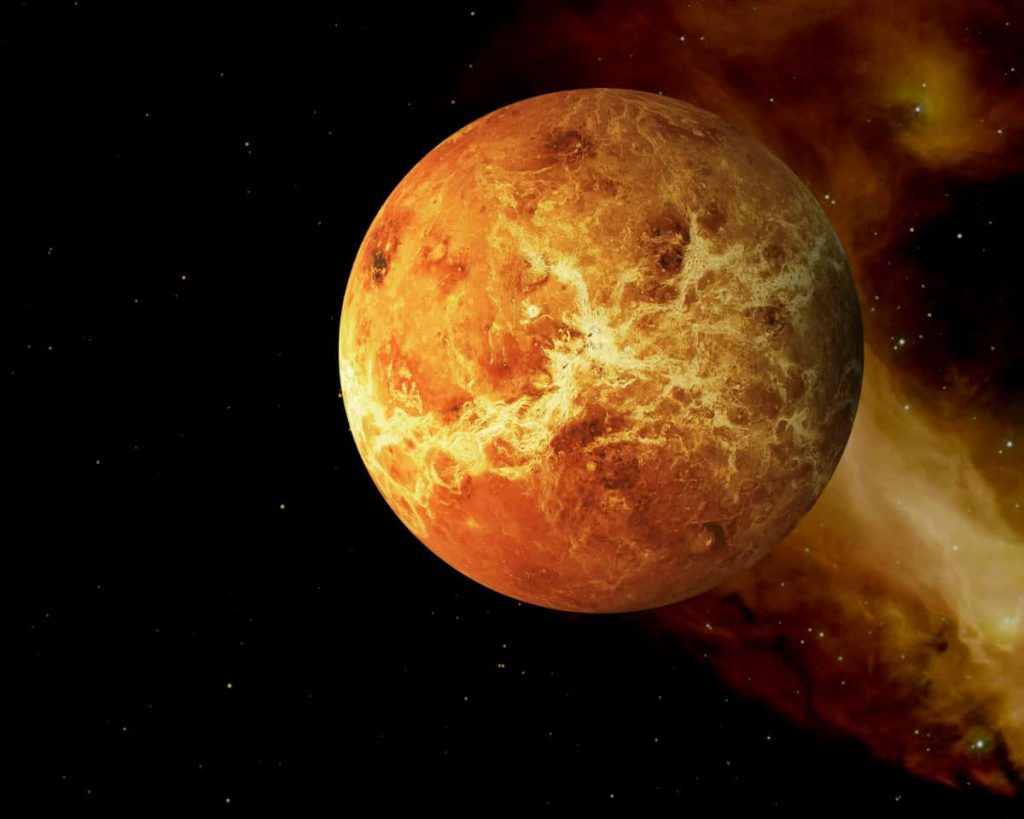
The extreme temperature of Venus can be attributed to its thick atmosphere. Venus’ atmosphere mostly consists of CO2, which is a very good greenhouse gas. For those who don’t know, a greenhouse gas is one that traps heat in the atmosphere of a planet. If you could somehow survive the hot temperatures on Venus, you would likely be crushed by its high pressure. The atmospheric pressure of Venus is approximately 93 times greater than what we experience on Earth.
Another interesting fact about Venus is that one year on Venus is shorter than a day! Yes, you read that right, a year is shorter than a day. Venus is the slowest rotating planet in our solar system, so it takes Venus longer to rotate around itself than to complete a revolution around the sun. It also exhibits retrograde motion, i.e., it rotates from east to west, which is the opposite direction of most other planets.
Also Read: Why Is Uranus Colder Than Neptune Despite Neptune Being Farther From The Sun?
5. Jupiter The Gas Giant
Jupiter, the largest planet of our solar system, is so big that it can fit 1,200 Earths inside it! An even more dazzling fact is that it is approximately 2.5 times larger than all the other planets combined in our solar system. As we mentioned earlier, H and He (hydrogen and helium) are the two fundamental elements that were formed just after the Big Bang. Interestingly, more than 99% of Jupiter is composed of only H and He. That is why Jupiter is popularly called a gas giant. Jupiter has no solid ground, only different strata of gases piled up one above another. In other words, if you have always dreamed of walking on the surface of the biggest planet in our solar system… I’m sorry, but it’s just not possible!
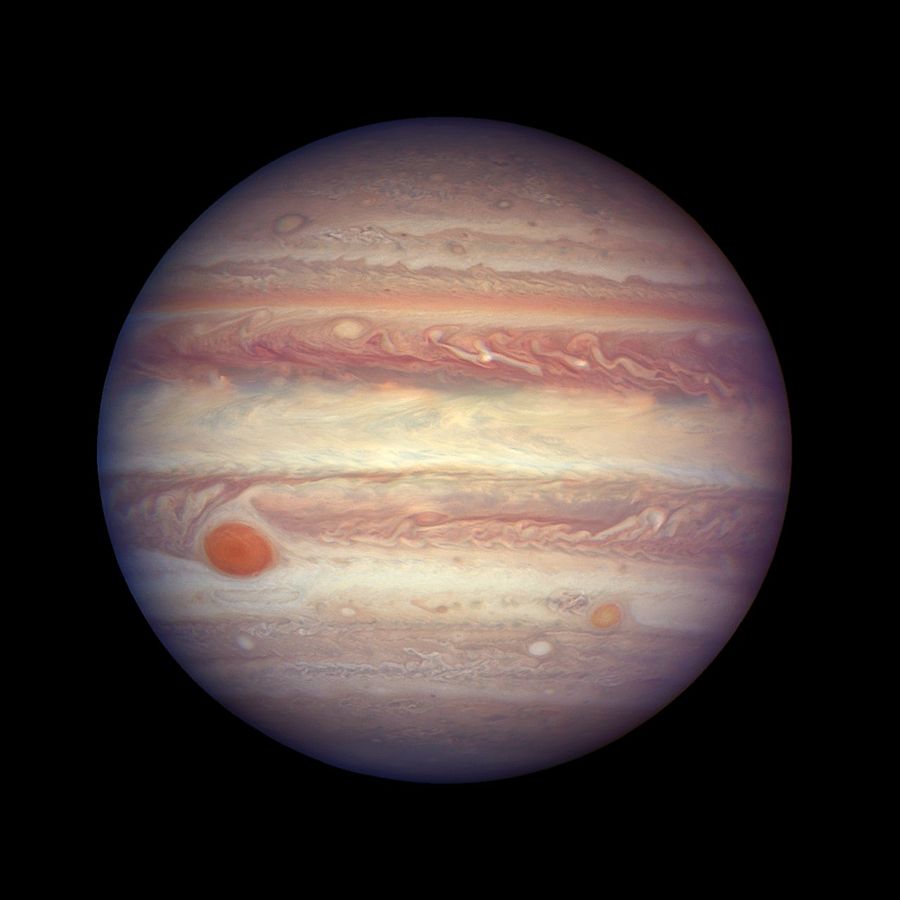
Scientists have estimated that the core of Jupiter has a temperature of 35,000oC. That’s even hotter than the surface of the Sun!
Also Read: What Are Gas Giants And Ice Giants?
6. Sun, The Boss Of Our Solar System
Our Sun is the largest and most massive object of the solar system by far. It can fit all the planets inside it nearly 600 times! Also, 99.8% of all the mass of our solar system is found in the Sun. Due to this mass, the Sun exerts an immense gravitational pull, causing nearby planetary bodies to be drawn towards it. This gravitational pull also allows the Sun to hold 8 planets in its gravitational grasp, along with potentially a dozen dwarf planets and over hundreds of moons!
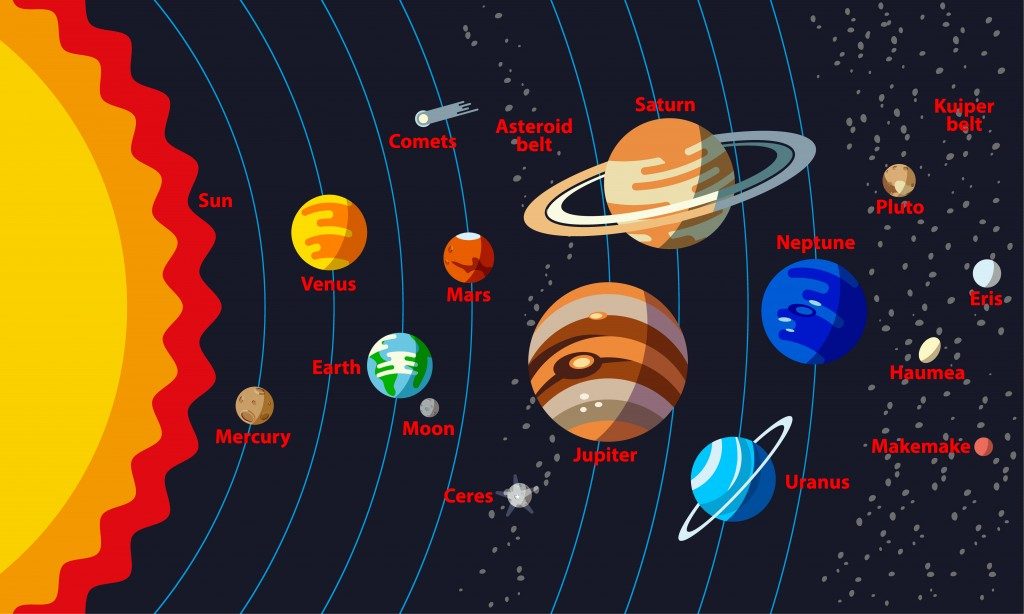
Now comes the sad part. Despite its enormous size and strength, scientists reckon that the Sun will not last forever. A few billion years from now, the Sun is likely to run out of its hydrogen fuel. This would mean it would then expand inexorably to engulf nearby planets like Mercury, Venus, and even our home world. Ultimately, the sun will collapse into a small star called a white dwarf.
Also Read: How Big Is The Sun?
7. Innumerable Stars
Besides the Sun, there are about 3,000 stars that are visible to the unaided eye on a clear moonless night. By using a telescope, we can scale up our vision to over 100,000 stars, but what’s most confounding is that there are billions of stars in our own Milky Way galaxy! Eminent Physicist Carl Sagan once astutely observed, “The total number of stars in the Universe is larger than all the grains of sand combined from all the beaches on Earth”.
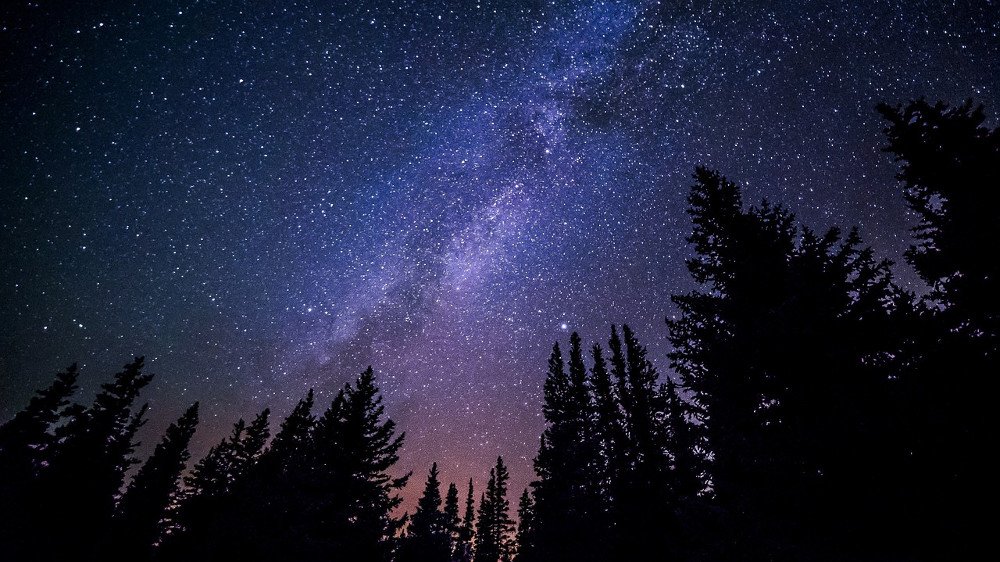
Astronomers have estimated that 275 million stars are born and die throughout the observable universe each day. The stars we see in the night sky are very far away, so far that the starlight we see has actually taken several thousand years to reach our eyes! This means that whenever we look out into the night and gaze at the stars, we’re actually experiencing how they looked in the past. Those stars may have even ceased to exist millions of years ago!
Also Read: Why Is Space Black?
8. Corpses In Space
During the early days of exploring space, we used to send animals to see how they would cope in the foreign environment of space. These animals included dogs, cats, rats, rabbits, frogs, and even chimpanzees. Unfortunately, they didn’t cope well. Tragically, many animals died out in space. What’s even scarier is that some astronomers reckon that their dead bodies could still be up there, stuck in spacecraft that never returned to Earth. What’s even more eerie is the fact that a couple of human-accompanied spacecraft have met the same fate! This means that countless doomed corpses are stuck up in space, floating in their tin cans far above Earth’s surface, turning space into a floating cemetery!
9. Prolonged Space Travel Can Alter Your DNA
Vacationing in space for too long can mess up your DNA. In 2016, an astronaut named Scott Kelly returned to Earth after spending nearly a year working on the International Space Station (ISS). To his surprise, he was two inches taller than when he’d left! That shouldn’t happen to an adult at 52 years of age! He has an identical twin, Mike, who looked exactly liked him, but after that prolonged space visit, they are now fraternal twins instead of identical because space actually altered the DNA of Scott. Geneticists studied Scott Kelly’s DNA and were surprised to find that his genetic make-up has dramatically changed. This meant that, for all intents and purposes, Scott Kelly is literally a new man! Geneticist reckons that space is so foreign and harsh that it can alter basic cell biology, effectively mutating them. This is what happened to Scott, who remains a changed person to this day!
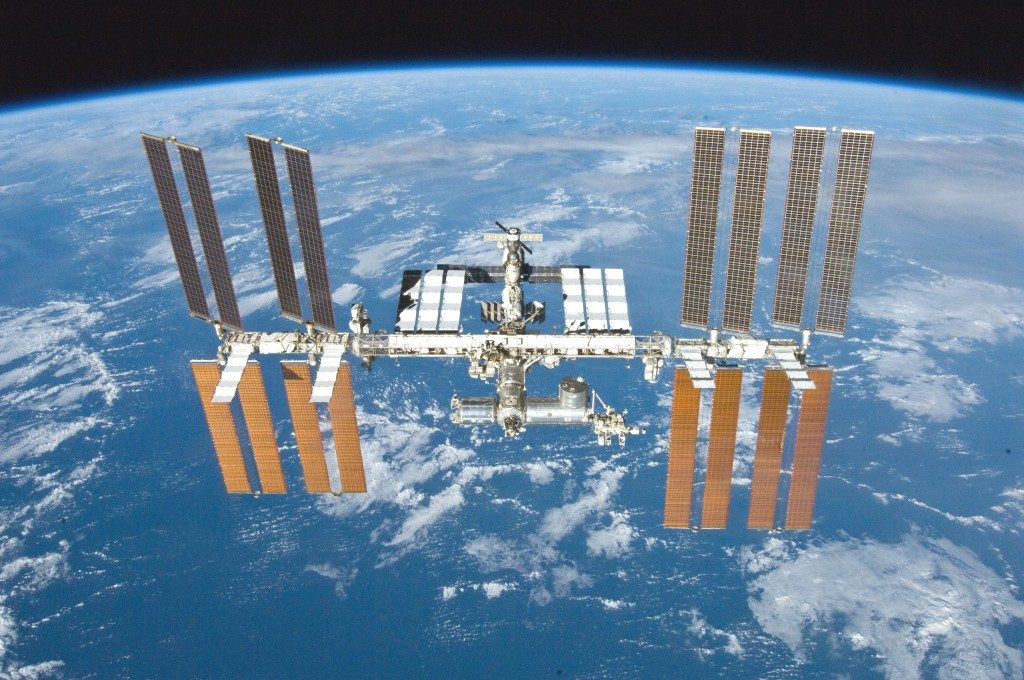
Also Read: Psychological Effects Of Space Travel: How Does Being In Space Affect The Psychology Of Astronauts?
10. Great Attractor: A Cute Name For An Impending Apocalypse
Some say that nature despises a vacuum, but when it comes to space, there is an astronomically powerful vacuum that is on a spree to suck up the entire galaxy like a spaghetti noodle!
Roughly 150-250 million light-years away from our own galaxy, the Milky Way, lies an anomaly called the Great Attractor. This seemingly innocuous name doesn’t reveal its true nature. The Great Attractor has a massive gravitational pull, enough to consume entire galaxies and compress them inside it. As mentioned before, we’re all in perennial motion in the Universe and our galaxy is zipping along at an unbelievable speed of 559,235 MPH. As the Great Attractor is a gravitational titan, our Milky Way is heading towards it.
What confounds scientists the most is the nature of the Great Attractor. There doesn’t seem to be enough mass around the Great Attractor, yet it exerts an unfathomably powerful gravitational pull. We don’t know much about it yet. Moreover, it is conveniently hidden behind a cluttered region called the zone of avoidance. This zone is brimming with gases, space dust and stellar remnants, making it difficult for astronomers to figure out what lies inside this Great Attractor. Though it will be billions of years before our Milky Way is sucked up in this Great Attractor, knowing that the universe has already decided the fate of our galaxy is quite sobering!
We hope you enjoyed these 10 astonishing facts about the universe. From the fateful Big Bang to the dreadful Great Attractor, there are countless mysteries, esoteric energies, and unfathomable phenomena that will keep intriguing humanity so long as we look up at the stars and wonder.
Also Read: What Is The Great Attractor And How Will It Destroy Us?
How well do you understand the article above!

References (click to expand)
- Fortney, J. J., & Nettelmann, N. (2009, December 19). The Interior Structure, Composition, and Evolution of Giant Planets. Space Science Reviews. Springer Science and Business Media LLC.
- Big Bang Cosmology - University of Pittsburgh. The University of Pittsburgh
- K–12 STEM Lesson Plans. haystack.mit.edu
